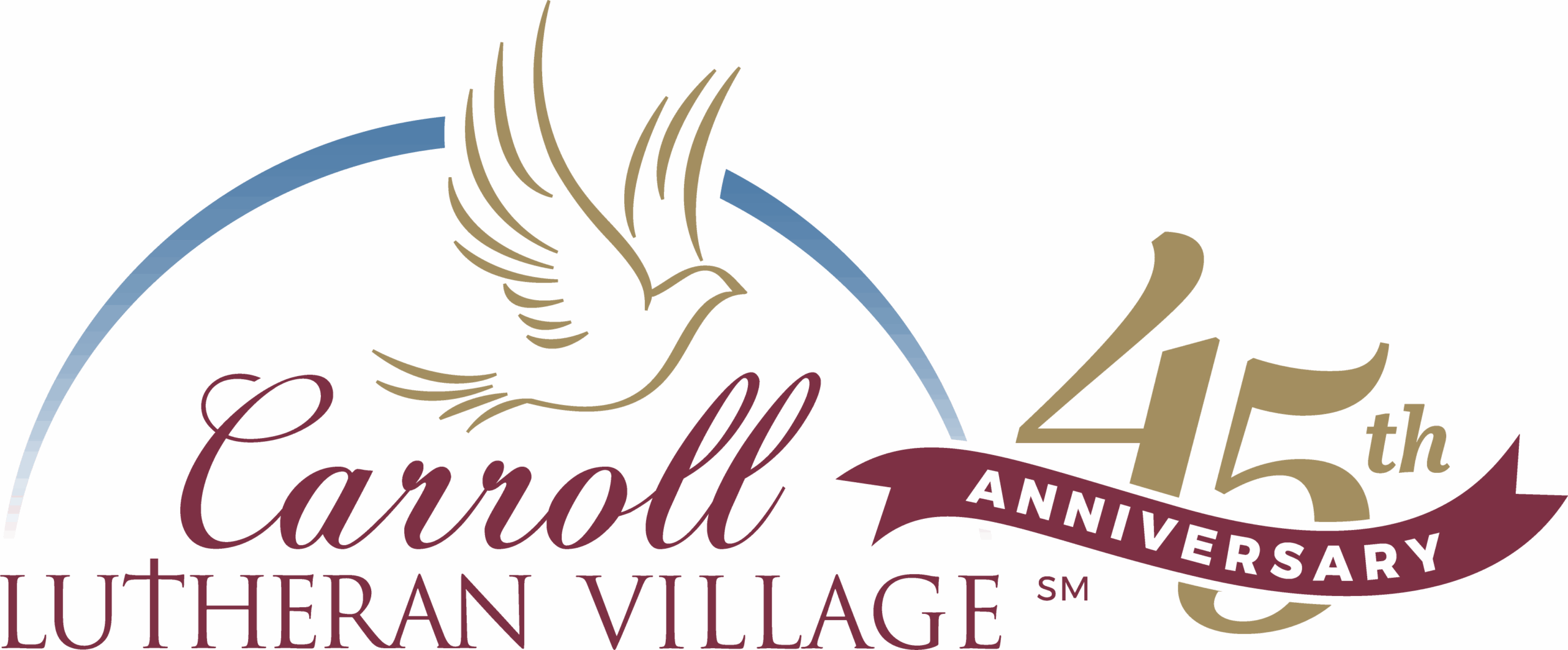Purple Martins Offered Free Housing at CLV
Carroll Lutheran Village is now offering free lodging to an exclusive clientele – purple martin swallows. Resident Grant Dannelly and his “Martini” team of resident volunteers have created what they hope will become a purple martin sanctuary at CLV, from two poles of 24 gourds.
Dannelly initially became interested in purple martins when his wife gave him a bird house as a Christmas present, but it was several years before the purple martins used Dannelly’s housing. He needed to learn how to better care for the birds. “Somewhere along the way I acquired a keen interest in the Purple Martin Conservation Association, and I learned how to become a good landlord,” said Dannelly.
What does it take to be a good landlord? According to Dannelly, “gourd housing needs to be placed in an open space, away from homes and trees. Also, landlords need to place pine needles and cedar chips in the gourds prior to mounting. And the poles cannot be situated too high because the landlord needs to be checking the nests every five days to address possible issues with mites and blowflies.” Good landlords will also often place blue bird boxes nearby to help encourage other swallows from occupying the gourds.
Purple martins seek out nesting areas in Eastern North America in mid to late spring, returning to South America at the end of summer. They typically live in colonies, which is why the plastic gourds are mounted on a rack system and attached to poles.
Gourd housing is considered preferable to multi-level Trio aluminum housing because the gourds allow nesting birds more space. Also, the baby birds can nest in the back of the gourd, keeping them safe from predators, including owls, hawks and even snakes. Gourds are also easier to install, clean and store during the off season.[/vc_column_text][/vc_column][vc_column width=”1/3″][vc_gallery interval=”3″ images=”67594,67595,67597,67596,68100,68098,68097,68096,68095″ img_size=”large”][/vc_column][/vc_row][vc_row][vc_column][vc_column_text]The incubation period is typically 18 days, and the female lays anywhere from three to five eggs. Both the father and mother feed the baby birds, and the younglings are usually able to leave the nest after a month.
Dannelly and his “Martini” gang are hoping purple martins will return to CLV each year to raise their young. “I am counting on the birds knowing a good thing when they see it,” said Dannelly. Likewise, he wants the residents walking by the colonies or observing them from a nearby bench to “truly enjoy a little gift from God and Mother Nature.”
Update
CLV now has its first resident pair of nesting purple martins. Having one nest this year means the nesting population will likely increase each following year because other purple martins are attracted to the new living quarters.
The first nest check was made after the purple martins were given ample time to build nests and lay eggs so as not to scare them away. As a result, abandoning the site dramatically dropped because of parental instinct to protect the newly laid clutch. When Team Martini inspected Gourd #1 they were delighted to see four new white eggs. Unfortunately, the remaining 23 gourds had no purple martin nests or eggs.
On July 9, Team Martini made another nest check and discovered three newly hatched chicks and one unhatched egg. The young chicks were carefully inspected and were well fed. After the nest check, the parent birds returned immediately to Gourd #1 as they certainly were not frightened off.
This turn of events has clearly validated Team Martini’s effort to establish CLV’s permanent purple martin sanctuary.
The nest will be checked about every five days to keep track of the growth and health of these new chicks. The birds will remain in the nest for about 28 days before fledging during the first week of August.







